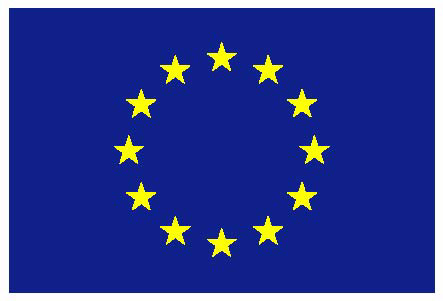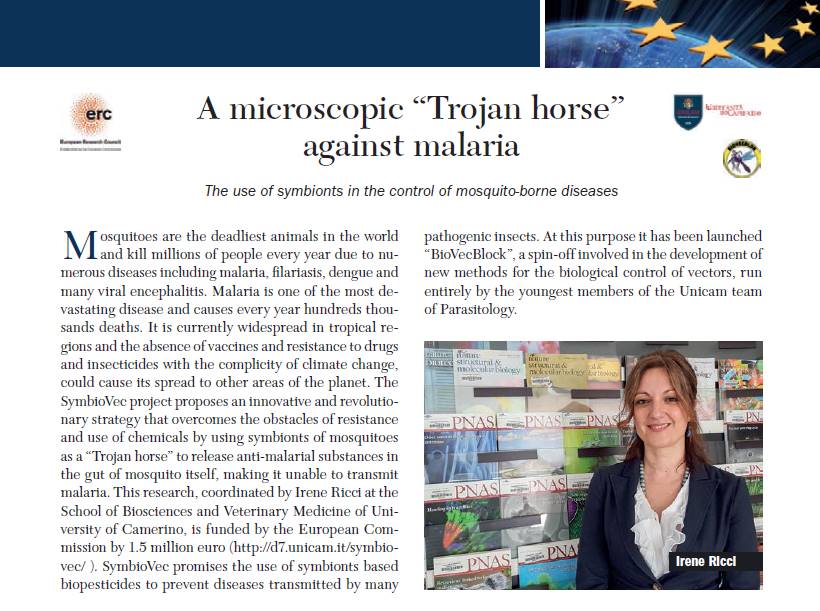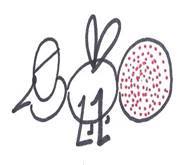
Research outputs
Publications
- Epis S, Gaibani P, Ulissi U, Chouaia B, Ricci I, Damiani C, Sambri V, Castelli F, Buelli F, Daffonchio D, Bandi C, Favia G. Do mosquito-associated bacteria of the genus Asaia circulate in humans? European Journal of Clinical Microbiology and Infectious Disseas 2012; 31(6): 1137-40.
- Chouaia B, Rossi P, Epis S, Mosca M, Ricci I, Damiani C, Ulissi U, Crotti E, Daffonchio D, Bandi C, Favia G. Delayed larval development in Anopheles mosquitoes deprived of Asaia bacterial symbionts. BMC microbiology 2012; 12: S2.
- Ricci I, Damiani C, Capone A, DeFreece C, Rossi P and Favia G. Mosquito/microbiota interactions: from complex relationships to biotechnological perspectives. Current opinion in Microbiology 2012; 15(3): 278-284.
- Ricci I, Valzano M, ulissi U, Epis S, Cappelli A, Favia G. Symbiotic control of mosquito borne disease. Pathogens and global health 2012; 106(7): 380-385. Journal's most cited papers of the last three years.
- Valzano M, Achille G, Burzacca F, Ricci I, Damiani C, Scuppa P, Favia G. Deciphering microbota associated to Ryncophorus ferrigineus in Italian samples: a pilot study. Journal of Entomological and Acarological Research 2012; 44:e16 85-89.
- Capone A, Ricci I, Damiani C, Rossi P, Scuppa P, Valzano M, Cappelli A, DeFreece C, Ulissi U, Favia G. Mosquito/microbiota interactions: from basic research to biotechnological perspectives in mosquito borne diseases control. XXVII Congresso SOIPA - Mappe Parassitologiche 18, (p.215-216). Alghero (SS), Italia, 26-29 Giugno, 2012.
- Crotti E, Gonella E, Ricci I, Clementi E, Madrioli M, Sacchi L, Favia G, Alma A, Bourtzis K, Cherif A, Bandi C, Daffonchio D. Secondary Symbiont of Insect: Acetic Acid Bacteria. In the book ‘Manipulative Tenants/Bacteria Associated with Arthropods’ edited by E. Zchori-Fein and K. Bourtzis (CRC Press, USA) [ISBN 978-1-4398-2749-9], 2012. Book Chapter 3, pg. 45-72.
- Ricci I, Scuppa P, Damiani C, Rossi P, Capone A, De Freece C, Valzano M, Cappelli A, Mosca M, Ulissi U, Favia G. Facing malaria parasite with mosquito symbionts. In the book ‘Malaria Parasites’ edited by Omolade O. Okwa, Lagos State University, Nigeri. Publisher Intech Open, (Croatia) [ISBN 978-953-51-0326-4], 2012. Book Chapter 4, pg. 57-70. Repoted as Highly downloaded Chapter.
- G. Favia, A. Amici, M. Montani, C. Kalogris, U. Ulissi, I. Ricci. Sviluppo di in anticorpo monoclonale anti-Asaia (anti-Asaia monoclonal antibody), 2012 - Numero del brevetto MI2012A001529: Ibridoma per anticorpi monoclonali anti-Asaia. Proprietario del brevetto: Università di Camerino
- Capone A*, Ricci I*, Damiani C, Mosca M, Rossi P, Scuppa P, Crotti E, Epis S, Angeletti M, Valzano M, Sacchi L, Bandi C, Daffonchio D, Mandrioli M and Favia G. Interactions between Asaia, Plasmodium and Anopheles: new insights in mosquito symbiosis and implications in Malaria Symbiotic Control. Parasites & Vectors 2013; 6(1): 182a. *equally contributing authors. 8th Annual BioMedCentral Award 2013, for the Microbiology, Immunology, Infection & Inflammation category.
- Chouaia B, Gaiarsa S, Crotti E, Degli Esposti M, Ricci I, Alma A, Favia G, Bandi C., Daffonchio D. Acetic acid bacteria genomes reveal functional adaptation to insect gut. Genomes Biology and Evolution 2014; 6(4): 912-920.
- Cappelli A, Ulissi U, Valzano M, Damiani C, Epis S, Gabrielli MG, Conti S, Polonelli L, Bandi C, Favia G, Ricci I. A Wickerhamomyces anomalus killer strain in the malaria vector Anopheles stephensi. Plos One 2014. 9(5): e95988a. This Article has been selected for Publication in Global Medicine Discovery Series Key Drug Discovery.
- On line magazine ‘Global Medicine Discovery’ – [ISSN 1929-8536]. A Wickerhamomyces anomalus killer strain in the malaria vector Anopheles stephensi. Section Key Drug Discovery, 5 ottobre 2014
- De Freece C, Damiani C, Valzano M, D’amelio S, Cappelli A, Ricci I, Favia G. Detection and isolation of the α-proteobacterium Asaia in Culex mosquitoes. Medical and Veterinary Entomology 2014; 28: 438-442.
- Epis S, Porretta D, Mastrantonio V, Urbanelli S, Sassera D, De Marco L, Mereghetti V, Montagna M, Ricci I, Favia G, Bandi C. Temporal dynamics of the ABC transporter response to insecticide treatment: insights from the malaria vector Anopheles stephensi. Scientific Reports 2014;4:7435. doi: 10.1038/srep07435.
- Epis S, Favia G, Ricci I. Yeast symbionts in arthropod vectors: possible implications for the control of vector-borne diseases. 63° Annual meeting of the American society of Tropical Medicine and Hygiene (ASTMH), New Orleans, LA USA, 2-6 Novembre, 2014. The American Journal of Tropical Medicine and Hygiene V. 91 (Suppl.5) p.407.
- Ricci I, Damiani C, Rossi P, Capone A, Valzano M, Cappeli A, Bozic J, Mancini MV, Favia G. Symbionts and mosquito vectors: work in progress at Unicam. XXVIII Congresso SOIPA – (p.61). Roma, Italia, 24-27 Giugno, 2014.
- Mancini MV, Bozic J, Capone A, Cappeli A, Damiani C, Epis S, Rossi P, Valzano M, Bandi C, Ricci I, Favia G. Bacterial symbiotic control of mosquito vectors: from bench to field. XXVIII Congresso SOIPA – (p.183). Roma, Italia, 24-27 Giugno, 2014.
- Bozic J, Capone A, Valzano M, Cappeli A, Damiani C, Rossi P, Mancini MV, Favia G, Ricci I. Using symbiotic yeasts associated to mosquitoes to prevent plasmodial infection in malaria vectors: current status and future strategies for symbiotic control of mosquito borne diseases. XXVIII Congresso SOIPA – (p.184). Roma, Italia, 24-27 Giugno, 2014.
- Capone A, Bozic J, Cappeli A, Damiani C, Rossi P, Valzano M, Epis S, Favia G, Ricci I. Engineering of the yeast Wickerhampmyces anomalus, symbiont of mosquito species relevant to public health, for paratransgenic control strategies. XXVIII Congresso SOIPA – (p.185). Roma, Italia, 24-27 Giugno, 2014.
- Valzano M, Cappeli A, Ulissi U, Damiani C, Capone A, Bozic J, Cecarini V, Favia G, Ricci I. A killer yeast strain harboured in malaria vectors: new insights in the mosquito biology and possible implications in the malaria transmission blocking. XXVIII Congresso SOIPA – (p.213). Roma, Italia, 24-27 Giugno, 2014.
- Epis S, Damiani C, Giovati L, Ricci I, Favia G, Polonelli L, Kramer LH, Bandi C. Models for the control and therapy of vector-borne diseases: killer yeasts and killer peptides. XXVIII Congresso SOIPA – (p.215). Roma, Italia, 24-27 Giugno, 2014.
- Alma A, Daffonchio D, Balloi A, Bandi C, Crotti E, Damiani C, Favia G, Gonella E, Madrioli M, Montagna M, Ricci I, Sacchi L. I Microrganismi simbionti degli Insetti. In ‘Gli insetti e il loro controllo’ a cura di Francesco Pennacchio, Liguori editore (Napoli) [ISBN 978-88-207-5351-1] [eISBN 978-88-207-5352-8], 2014. Book Capitolo 26, pg. 647-673.
- Mozzicafreddo M, Cuccioloni M, Bonfili L, Cecarini V, Palermo F, Cocci P, Mosconi G, Capone A, Ricci I, Eleuteri AM, Angeletti M. Environmental pollutants directly affect the liver X receptor alpha activity: kinetic and thermodynamic characterization of binding. Journal of Steroid Biochemistry and Molecular Biology 2015, 152: 1-7.
- Rossi P, Ricci I, Cappelli A, Damiani C, Ulissi U, Mancini MV, Valzano M, Capone A, Epis S, Crotti E, Chouaia B, Scuppa P, Joshid D, Xi Z, Mandrioli M, Sacchi L, O’Neill S.L., Favia G. Mutual exclusion of Asaia and Wolbachia in the reproductive organs of mosquito vectors. Parasite & Vectors 2015, 8:278.
- Epis S, Capone A, Martin E, Paolucci M, Bazzocchi C, Valzano M, Bozic J, Novati S, Favia G, Ricci I. A rapid qPCR method to investigate the circulation of the yeast Wickerhamomyces anomalus in humans. NewMicrobiologica 2015, 38(4):577-81.
- Mancini MV, Spaccapelo R, Damiani C, Facchinelli L, Ricci I, Favia G. Paratransgenic control of malaria vectors: a semi-field pilot study. EMBO Conference - Molecular and population biology of mosquitoes and other disease vectors - Current, resurgent and emerging diseases – Kolymbari, Greece, 24-29 Luglio, 2015.
- Valzano M, Cecarini V, Cappelli A, Capone A, Bozic J, Cuccioloni M, Epis S, Dezemona P, Angeletti M., Eleuteri A.M., Favia G., Ricci I. A yeast strain associated to Anopheles mosquitoes produces a toxin able to kill the malaria parasite. Malaria Journal 2016, 15(1):21.
- Martin E, Bongiorno G, Giovati L, Montagna M, Crotti E, Damiani C, Gradoni L, Polonelli L, Ricci I, Favia G, Bandi C, Epis S. Isolation of a Wickeramomyces anomalus yeast strain from the sand fly Phlebotomus perniciosus, displaying the killer phenotype. Medical and Veterinary Entomology 2016, 30(1):101-6.
- Mancini MV, Spaccapelo R, Damiani C, Accoti A, Tallarita M, Petraglia E, Rossi P, Cappelli A, Capone A, Peruzzi G, Valzano M, Picciolini M, Diabaté A, Facchinelli L, Ricci I, Favia G. Paratransgenesis to control malaria vectors: a semi-field pilot study. Parasit & Vectors 2016, 10;9(1):140.
- Borhani N, Ricci I, Favia G, Damiani C, Naddaf Sr, Basseri Hr, Heidari M, Fotouhi F. Identification and Molecular Analysis of midgut mucin gene in Anopheles stephensi. International Journal of Tropical Insect Science 2016, 36(2): 60 – 69.
- Mancini MV, Spaccapelo R, Damiani C, Cappelli A, Capone A, Rossi P, Valzano M, Accoti A, Facchinelli L, Serrao A, Ricci I, Favia G. Paratransgenesis To Control Mosquito Borne Diseases: From Bench To Field. XXIX Congresso SOIPA (pag.). Bari, Italia, 21-23 Giugno, 2016.
- Mancini MV, Damiani C, Short S, Rossi P, Cappelli A, Paniccià M, Capone A, Valzano M, Ricci I, Dimopoulos G, Favia G. The mosquito microbiota: implications in the control of mosquito borne diseases. XXV ICE (pag.). Orlando, FL USA, 25-30 Settembre, 2016.
- De Marco L, Sassera D, Epis S, Mastrantonio V, Ferrari M, Ricci I, Comandatore F, Bandi C, Porretta D, Urbanelli S. The choreography of the chemical defensome response to insecticide stress: insights into the Anopheles stephensi transcriptome using RNA-Seq. Scientific Reports 2017 23;7:41312. doi: 10.1038/srep41312.
- Bozic J, Capone A, Pediconi D, Mensah P, Cappelli A, Valzano M, Mancini MV, Scuppa P, Martin E, Epis S, Rossi P, Favia G, Ricci I. Mosquitoes can harbour yeasts of clinical significance and contribute to their environmental dissemination. Environ Microbiol Rep. 2017, 9(5):642-648.
- Cappelli A, Damiani C, Valzano M, Mancini MV, Rossi P, Ricci I, Chiodera A, Favia G. Molecular Diagnosis of Malaria Infection: A Survey in a Hospital in Central Italy. Adv Biotech & Micro 2017, 5(4): AIBM.MS.ID.555670.
- De Marco L, Epis S, Capone A, Martin E, Bozic J, Crotti E, Ricci I, Sassera D. The genomes of four Meyerozyma caribbica isolates and novel insights into the Meyerozyma guilliermondii species complex. G3 2018, 8(3):755-759.
- Martin E, Varotto Boccazzi I, De Marco L, Bongiorno G, Montagna M, Sacchi L, Mensah P, Ricci I, Gradoni L, Bandi C, Epis S. The mycobiota of the sand fly Phlebotomus perniciosus: involvement of yeast symbionts in uric acid metabolism. Environ Microbiol. 2018 , 20(3):1064-1077.
- Giovati L, Santinoli C, Ferrari E, Ciociola T, Martin E, Bandi C, Ricci I, Epis S, Conti S. Candidacidal Activity of a Novel Killer Toxin from Wickerhamomyces anomalus against Fluconazole-Susceptible and -Resistant Strains. Toxins 2018, 10(2). pii: E68. doi: 10.3390/toxins10020068.
- Mancini MV, Damiani C, Accoti A, Tallarita M, Nunzi E, Cappelli A, Bozic J, Catanzani R, Rossi P, Valzano M, Serrao A, Ricci I, Spaccapelo R, Favia G. Estimating bacteria diversity in different organs of nine species of mosquito by Next Generation Sequencing. BMC Microbiology 2018, 18:126 doi.org/10.1186/s12866-018-1266-9
- Marchiori E, Ricci I, Marcer F, Cassini R. Qualitative and quantitative methods for estimating Spirorchidiasis burden in sea turtles. Accepted in International Journal for Parasitology: Parasites and Wildlife, 7(3): 409-414.
- Cappelli A, Capone Aida, Valzano M, Bozic J, Preziuso S, Mensah P, Varotto Boccazzi I, Rinaldi L, Favia G, Ricci I. DGGE analysis of bacteria in Italian ticks and first detection of Streptococcus equi in Rhipicephalus bursa from the Lazio Region. VBZD 2018, doi.org/10.1089/vbz.2018.2364.
- Alonso D, Mancini MV, Damiani C, Cappelli A, Ricci I, Niz Alvarez MV, Bandi C, Ribolla P, Favia G. Genome reduction in the mosquito symbiont Asaia. Genome Biology and Evolution 2018, 11(1):1–10. doi: 10.1093/gbe/evy255.
- Cappelli A, Capone Aida, Valzano M, Bozic J, Preziuso S, Mensah P, Varotto Boccazzi I, Rinaldi L, Favia G, Ricci I. DGGE analysis of bacteria in Italian ticks and first detection of Streptococcus equi in Rhipicephalus bursa from the Lazio Region. VBZD 2018, doi.org/10.1089/vbz.2018.2364.
- Cappelli A, Valzano M, Cecarini V, Bozic J, Rossi P, Mensah P, Amantini C, Favia G, Ricci I. Killer yeasts exert anti-plasmodial activities against the malaria parasite Plasmodium berghei in the vector mosquito Anopheles stephensi and in mice. Parasit Vectors 2019, 12(1):329. doi: 10.1186/s13071-019-3587-4.
- Cappelli A, Damiani C, Mancini MV, Valzano M, Rossi P, Serrao A, Ricci I, Favia G. Asaia Activates Immune Genes in Mosquito Eliciting an Anti-Plasmodium Response: Implications in Malaria Control. Frontiers in Genetics 2019, DOI: 10.3389/fgene.2019.00836.
- Cecarini V, Cuccioloni M, Bonfili L, Ricciutelli M, Valzano M, Cappelli A, Amantini C, Favia G, Eleuteri AM, Angeletti M, Ricci I. Identification of a Killer Toxin from Wickerhamomyces anomalus with β-Glucanase Activity. Toxins 2019, 11(10). pii: E568. doi: 10.3390/toxins11100568.
- Cappelli A, Favia G, Ricci I. Wickerhamomyces anomalus in Mosquitoes: A Promising Yeast-Based Tool for the “Symbiotic Control” of Mosquito-Borne Diseases. Front. Microbiol. 2021, 11:621605 doi: 10.3389/fmicb.2020.621605
- Cappelli A, Amantini C, Maggi F, Favia G, Ricci I. Formulation and Safety Tests of a Wickerhamomyces anomalus-Based Product: Potential Use of Killer Toxins of a Mosquito Symbiotic Yeast to Limit Malaria Transmission. Toxins 2021, 13(10):676. doi: 10.3390/toxins13100676.
- Cappelli Alessiaa, Damiani Claudia, Capone Aida, Bozic Jovana, Mensah Priscillaa, Clementi Emanuela, Spaccapelo Roberta, Favia Guido, Ricci Irene. Tripartite interactions comprising yeast-endobacteria systems in the gut of vector mosquitoes. Front. Microbiol. 2023, 14, 1157299
Conferences and other events
- Invited Speaker at the 1st International “Picha anomala” mini-symposium (2010) UPPSALA, Sweden
- Speaker at XXVI SOIPA (2010) PERUGIA, Italia
- Invited Speaker at the International ‘Biotechnology, Drug Discovery & Novel Therapeutic Approaches’ Conference (2010) CAMERINO, Italy
- Training Workshop: ‘Immunological Strategies For Malaria Control; Traditional Approaches, Vaccine Candidates, Novel Ideas’. 26-31 July 2010 Camerino, Italy
- Abstract contribute at XXVII SOIPA (2012) ALGHERO, Italia
- XXVIII SOIPA (2014) ROMA, Italia (Speaker)
- Poster at 63° Annual meeting ASTMH (2014) New Orleans, LA USA
- Poster at Meeting ‘Unicam with and for Africa’ CAMERINO (2014), Italia
- Astract contribute in EMBO Conference (2015) Kolymbari, Greece
- Abstract contribute at XXIX SOIPA (2016) BARI, Italia
- Abstract contribute at XXV International Congress of Entomology (2016), Orlando, FL USA
- 71° Convegno SISVET (2017), Napoli, Italy (Poster)
- Launtenabio kick off meeting, Camerino, Italy 2019
- VIII INTERNATIONAL SYMPOSIUM ON INSECT SCIENCE (MOLI 2019), SITGES, BARCELONA, SPAIN (Poster)
- VIII ECOP-OSOP JOINT CONGRESS 2019 , ROME, ITALY (Invited Speaker)
- XXXI CONGRESSO NAZIONALE DELLA SOCIETÀ ITALIANA DI PARASSITOLOGIA 2021, Simposio Malaria (Invited Speaker)
Media
- Corriere Adriatico: ‘Un riconoscimento per Irene Ricci’ pg. V, 16.07.2011.
- Bur.it: ‘Altro successo europeo per la ricerca d’eccellenza’ online, 18.07.2011.
- Nuovo Chienti e Potenza: ‘Ancora un successo europeo per la ricerca di eccellenza UNICAM’ pg. 11, 20.07.2011.
- Il Resto del Carlino: ‘Studiosa di malaria tra i migliori in Europa’ pg. 11, 21 luglio 2011.
- L’Appennino Camerte: ‘Successo europeo per la ricerca di eccellenza’ pg. 12, 22 luglio 2011.
- Asca: ‘Da UE 1,5 MLN per la ricerca di eccellenza UNICAM’ online, 16.11.2011.
- Nuovo Chienti e Potenza: ‘1,5 milioni di euro per la ricerca di eccellenza in UNICAM’ pg. 12, 16.11.2011.
- Cronache Maceratesi.it: ‘1,5 milioni di euro per la ricerca di eccellenza in UNICAM’ online, 16.11.2011.
- Il Mascalzone.it: ‘1,5 milioni di euro per la ricerca di eccellenza in UNICAM’ online, 16.11.2011.
- Pianeta Universitario: ‘1,5 milioni di euro per la ricerca di eccellenza in UNICAM’ online, 16.11.2011.
- Il Resto del Carlino: ‘Un milione e mezzo per la ricerca sulla malaria, pg. 13, 17.11.2011.
- Fidest: ‘Unicam: ricerca di eccellenza’ online, 19.11.2011.
- Corriere Adriatico: ‘Malaria, un pesticida “bio” contro l’infezione’ pg. 11, 22.11.2011.
- Cronache Maceratesi.it: ‘Ricercatrice UNICAM entra a far parte di Academia.net’ online, 24.10.2013.
- Trasmissione radiofonica ‘Doppia Vela 21’ su Radio Manà Manà, il 25.10.2013.
- Trasmissione televisiva ‘Buongiorno Regione Marche’ su RAI 3, TG Regionale il 27.02.2014.
- Oggi Scienza: ‘Malaria, va a una ricerca italiana il premio BioMed’ online, 25.04.2014.
- Platinum/Research &Innovation(pg.77), Insert of the magazine 'Sole24Ore':'A microscopic Trojan horse against malaria', 08.07.2016



